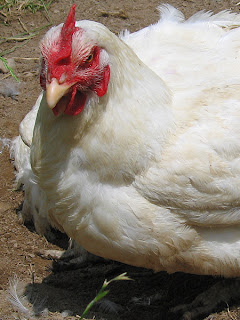Every day, technology continues to grow and revolutionize the world. It has exceeded anything our grandparents could fathom. During their youth, the notion of examining an unborn baby in its mother’s womb was limited to imagination. Today, ultrasounds are used daily to monitor the health of the baby and its mother.
Countless medical inventions have bettered understand of the functions of the body. The stethoscope by Rene Theophile Hyacinthe Laënnec has expanded our learning on the circulatory and respiratory system by allowing doctors to listen to the patient’s breathing and heartbeat. The X-Ray by Wilhelm Conrad Roentgen lets doctors investigate within the patients’ bodies, including their bones. The endoscope by Phillip Bozzini permits doctors to investigate within the body, especially the digestive, urinary, respiratory and cardiovascular system. Composed of a lighting system, image transmission system, bending mechanism and channels for air, the endoscope has permitted a deeper examination of the human body.
One medical advancement from Canada is the discovery of insulin (Figure 1). Insulin is a hormone produced in the pancreas. It decreases the blood glucose level by increasing its rate of utilization by the cells. Without insulin, the raised sugar levels may cause damage to the heart, eyes, kidneys and nerves. Therefore, insulin saved the lives of millions of diabetic patients.
Other Canadian medical contributions include the invention of the bone marrow compatibility test by Barbara Bain in 1960, the world’s first heart pacemaker by Dr. John A. Hopps in 1950 and the invention of a dual tone receiver by Michael C.J. Cowpland in 1972. The heart pacemaker was further developed by William Greatbatch who inserted a minute battery, inventing the first implantable pacemaker (Figure 2).
Recently, Canada has performed the world’s first all-robot surgery. Canadian physicians have successfully treated a prostatectomy patient using a Da Vinci surgical robot and an anaesthetic robot named “McSleepy”. It is the first of its kind to administer anaesthesia to a patient. McSleepy was developed by McGill University in Montreal, Canada. This computerized system administers three standard drugs used for putting patients under for surgery, and monitors their effects automatically. McSleepy can calculate the appropriate drug doses of anaesthesia faster and more precisely than a human. This piece of technology has been designed to analyze biological information and adapt to changes.
Currently, Professor Jake Barralet of McGill University
Pictures
 |
| Figure 1: Insulin was discovered by Banting and Best at the University of Toronto. Insulin lowers the blood glucose by increasing the rate of utilization by the cells. |
 |
| Figure 2: A pacemaker is a small device to helps the heart to beat more regularly. Pacemakers can help adjust heartbeats that are too slow, too fast or irregular. |
Work Cited
"About.com: Http://www.pbs.org/wgbh/aso/databank/entries/dm22in.html." Inventors. A Science Odessy, n.d. Web. 14 Apr. 2011. <http://inventors.about.com/gi/dynamic/offsite.htm?site=http://www.pbs.org/wgbh/aso/databank/entries/dm22in.html>.
Bellis, Mary. "Canadian Inventors and Inventions." Inventors. N.p., n.d. Web. 14 Apr. 2011. <http://inventors.about.com/od/cstartinventions/a/Canadian_2.htm>.
Bellis, Mary. "History of the X-Ray." Inventors. N.p., n.d. Web. 14 Apr. 2011. <http://inventors.about.com/od/xyzstartinventions/a/x-ray.htm>.
Bellis, Mary. "Invention of the Cardiac Pacemaker - Artificial Hearts - Electrocardiography." Inventors. N.p., n.d. Web. 14 Apr. 2011. <http://inventors.about.com/library/inventors/blcardiac.htm>.
Bland, Eric. "Discovery News : Discovery Channel." Discovery Channel : Science, History, Space, Tech, Sharks, News. N.p., n.d. Web. 14 Apr. 2011. <http://dsc.discovery.com/news/2008/05/13/mcsleepy-anesthesia-02.html>.
Chiedozie, Anjus. "The History of Endoscopes | EHow.com." EHow | How to Videos, Articles & More - Trusted Advice for the Curious Life | EHow.com. N.p., n.d. Web. 14 Apr. 2011. <http://www.ehow.com/about_5454639_history-endoscopes.html>.
Naveen. "Top 10 Artificial Technologies Ready To Create A Real Human Being - Science Ahead." Science Ahead: This Blog Is a Window to the Ever-happening World of 'science' The Blog, Complete with Information and Views, Introduces Amazing Developments in Arenas like Technology, Nanotechnology, Space, Gadgets, Robots, Communication, Architecture Etc. N.p., 23 Apr. 2007. Web. 14 Apr. 2011. <http://www.scienceahead.com/entry/top-10-artificial-technologies-ready-to-create-a-real-human-being/>.
Roguin, Ariel. "Rene Theophile Hyacinthe Laënnec (1781–1826): The Man Behind the Stethoscope." Clinical & Medical Research. N.p., 1 July 2006. Web. 12 Apr. 2011. <Rene Theophile Hyacinthe Laënnec (1781–1826): The Man Behind the Stethoscope>.
Yamaguichi, T. "The Function of the Endoscope." PubMed.gov. Apr. 1990. Web. 15 Apr. 2011. <http://www.ncbi.nlm.nih.gov/pubmed/2366385>.
"YouTube - McSleepy." YouTube - Broadcast Yourself. N.p., n.d. Web. 14 Apr. 2011. <http://www.youtube.com/watch?v=3U6-44cudw4>.
Blogs Commented





